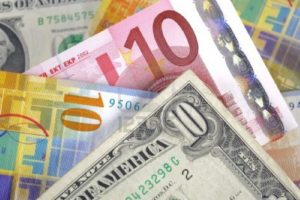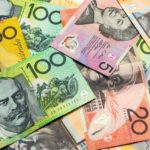 The euro traded steadily against the US dollar on Friday, as reports on annual consumer inflation and rate of unemployment, released out of the Euro zone, added to the case that the European Central Bank (ECB) will probably abstain from additional stimulus measures.
The euro traded steadily against the US dollar on Friday, as reports on annual consumer inflation and rate of unemployment, released out of the Euro zone, added to the case that the European Central Bank (ECB) will probably abstain from additional stimulus measures.
EUR/USD touched a session high at 1.3622 at 6:16 GMT, also the pairs highest point since October 31st, after which consolidation followed at 1.3613, rising 0.06% for the day. Support was likely to be received at November 28th low, 1.3564, while resistance was to be met at October 31st high, 1.3738.
The rate of unemployment in the Euro zone was reported to have decreased for the first time in four years in October to reach 12.1% from the record level of 12.2%, recorded a month earlier. This appears to be the first drop in regions unemployment since February 2011. The result outstripped forecasts, but however, it does not reflect the huge contrast in labor market situation in blocs developed nations and the peripheral economies.
Nevertheless, this data implied signs of economic recovery more than five years after five members of the bloc, including Cyprus and Spain, requested bailout packages.
At the same time, the annual harmonized index of consumer prices in the common currency zone rose to 0.9% in November, according to preliminary figures. This rate of inflation exceeded the expected 0.8% annual pace. In October the annualized inflation rate slowed down to 0.7%, which bolstered fears of deflation and prompted the European Central Bank to introduce a cut of its benchmark rate to a new record low level of 0.25%. Still, the annual rate of inflation remains well below ECBs objective of 2%, which is considered as providing price stability.
The above mentioned preliminary data, regarding inflation, also suggested that the central bank will probably refrain from adding to monetary stimulus.
On Thursday the Federal Statistics Office reported that Germany’s inflation rate, calculated in accordance with the harmonized European Union method, rose to 1.6% in November, from a pace of 1.2% in October. This came as a result of higher prices in the sector of services, which neutralized the drop of energy costs.
“This has clearly been a relatively decent month for the euro,” said Simon Smith, chief economist at FxPro Group Ltd. in London, cited by Bloomberg News. “The fact that we’ve seen a bit of a bounce back in inflation reduces what was already a small probability of the ECB acting in December.”
However, earlier in the day it became clear that German retail sales unexpectedly dropped in October, which implied that retailers may have faced difficulties ahead of the holiday season. Sales fell 0.8% in October compared to September, with their value remaining the least since December 2012. Preliminary estimates of a 0.5% gain have been defied.
Despite the disappointing result in October, however, the overall positive tendency remains intact, as retail sales during the first 10 months of the year climbed 0.2% in comparison with the same period a year ago. On annual basis, sales dipped 0.2% in October mostly due to the sharp 1.5% drop in sales of products, excluding first necessities. On the other hand, sales of food, drinks and tobacco rose 1.1% in October on annual basis.
Overall sales results may not suggest yet whether private consumption in Germany will be influenced in a negative manner during the final quarter of the year. Retail sales represent approximately 25% of the total consumption in the country.
Last but not least, also on Friday Standard & Poors confirmed Spain’s credit rating at BBB-, which stands for ratings agencys lowest investment grade, and also revised the outlook on nations debt to stable from negative, which was introduced in October 2012, stressing on a resumption in economic growth. The agency, on the other hand, reduced Netherlands’ longer-term credit rating to AA+ from AAA, citing concerns over growth.
Meanwhile, the euro was trading little changed against the pound and the Japanese yen. EUR/GBP cross ticked up 0.02% to trade at 0.8329 at 13:22 GMT. EUR/JPY pair was dipping a mere 0.01% on a daily basis to trade at 139.20 at 13:22 GMT.
The euro has advanced 7.5% during this year, or the best performing currency among the 10 developed-nation currencies, which are tracked by Bloomberg Correlation-Weighted Indexes. The US dollar has gained 3.9%, while the Japanese yen has plunged 14% during the same period.
The dollar index, which gauges the relative strength of the greenback against a basket of six other major currencies, retreated 0.12% to 80.53 at 13:20 GMT, after reaching 80.63 earlier on trading Friday.





